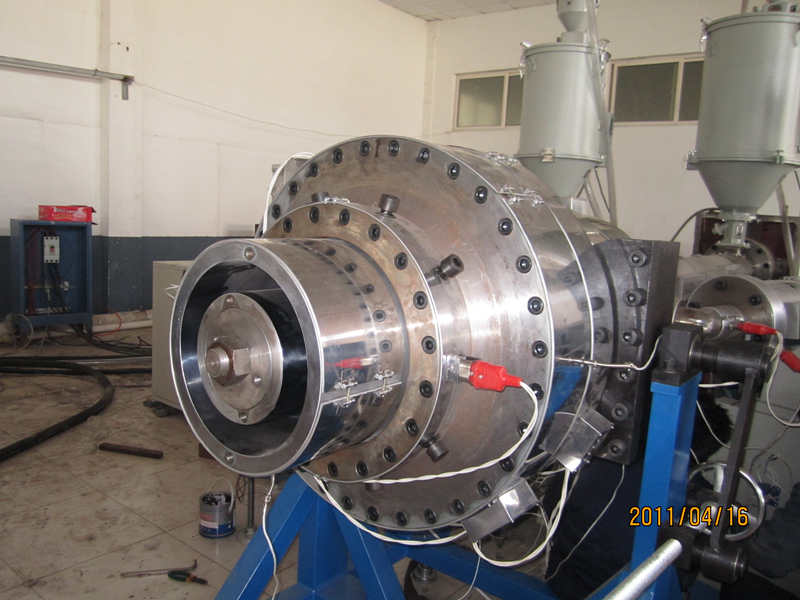Characteristics of steel-plastic pipe production line
2025-06-23
A steel-plastic pipe production line combines the benefits of both steel and plastic, making it ideal for various industrial applications, especially in areas requiring both strength and corrosion resistance. Here are some key characteristics of a steel-plastic pipe production line:
1. Dual Material Integration
Composite Structure: The production line produces pipes with a steel core, surrounded by a plastic layer (often PVC, PE, or PP). This combination allows the pipe to have the mechanical strength of steel while benefiting from the corrosion resistance and flexibility of plastic.
Multilayering Technology: The pipe can have multiple layers, with different materials serving specific functions. For example, the plastic layer provides corrosion resistance, while the steel layer offers structural strength.
2. High Efficiency
Advanced Extrusion Technology: The plastic layer is typically extruded over the steel pipe. This is done using a high-efficiency extrusion system, which ensures precise layering, good adhesion between materials, and minimal waste.
Speed: The production line is designed to produce large quantities of steel-plastic pipes efficiently, with high-speed operation for both the extrusion and winding processes.
3. Customization
Pipe Diameter and Thickness: The production line can be adjusted to produce steel-plastic pipes of varying diameters and wall thicknesses, meeting different standards and requirements for pressure, load-bearing capacity, and other parameters.
Material Choices: Depending on the application, the production line can switch between different types of plastic materials (e.g., PE, PP, PVC), and various types of steel, providing a high level of customization.

4. Precision and Quality Control
Automation and Monitoring: The production process is highly automated, with integrated monitoring systems to control extrusion temperature, pressure, and material flow to ensure high-quality production.
Multi-Point Inspection: Regular quality checks are performed at various stages, including raw material feeding, extrusion, and winding, to ensure that the final product meets required specifications.
5. Energy Efficiency
Power Optimization: Modern steel-plastic pipe production lines are designed to minimize energy consumption through optimized heating and cooling systems, as well as more energy-efficient motors and drives.
Recycling Capabilities: Some systems incorporate recycling options for plastic waste, reducing energy and material loss.
6. Durability and Performance
Corrosion Resistance: The plastic exterior protects the steel core from corrosion, extending the pipe's lifespan. This is especially useful for pipes used in underground installations or in aggressive chemical environments.
Impact Resistance: The steel layer provides high mechanical strength and impact resistance, preventing damage during transportation and installation.
7. Automation and Control Systems
PLC-Based Control: The production line often uses a programmable logic controller (PLC) for monitoring and control of the entire production process. This ensures precise control over the extrusion process, temperature regulation, and winding of the steel core.
Human-Machine Interface (HMI): Operators can adjust settings and monitor the production line through an intuitive HMI interface, improving usability and reducing the potential for operator error.
8. Environmental Considerations
Low Emission: Modern steel-plastic pipe production lines are designed to reduce emissions by using clean technologies and efficient cooling systems.
Material Recycling: Some lines are capable of recycling plastic waste, reducing environmental impact and optimizing resource use.
9. Wide Range of Applications
Construction: Used in water supply and drainage systems due to their strength and resistance to corrosion.
Industrial Use: Suitable for industries where pipes need to handle both high pressure and corrosive substances, such as in chemical processing plants.
Gas and Oil: In gas and oil transport, steel-plastic pipes provide durability and resistance to external pressures and chemicals.
In summary, a steel-plastic pipe production line combines the best characteristics of steel and plastic to produce pipes that are strong, durable, and resistant to corrosion. It is efficient, customizable, and optimized for various industrial and construction applications.
As a professional manufacturer and supplier, we provide high-quality products. If you are interested in our products or have any questions, please feel free to contact us.